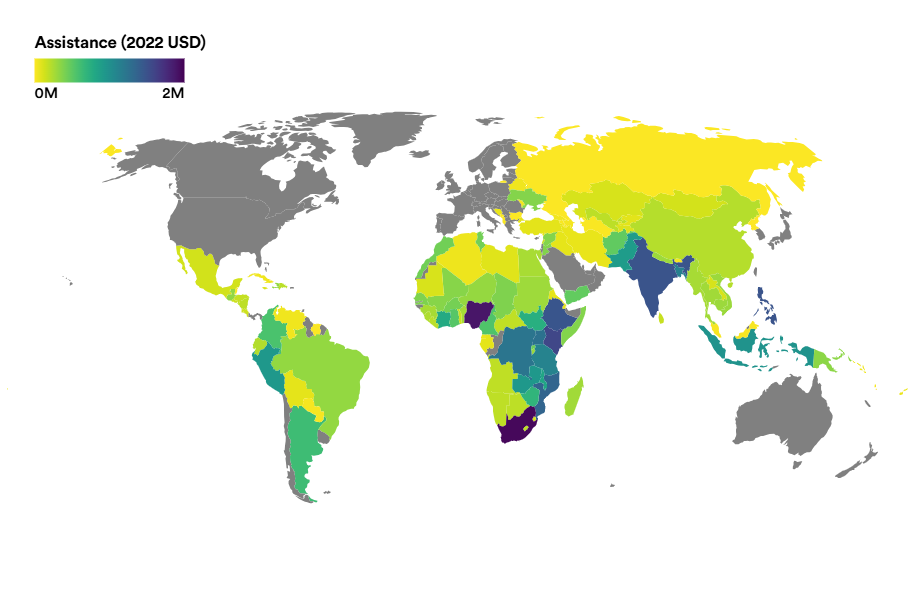
The United States has announced significant reductions to its foreign aid programs, including suspending operations at its primary federal aid agency. These cuts threaten to accelerate the spread of infectious diseases in low-income countries and exacerbate global economic and geopolitical instability.
The Global Health Consequences of Aid Cuts
Reductions in U.S. foreign aid could severely undermine global public health efforts. The suspension of activities at the U.S. Agency for International Development (USAID) and cuts to other aid programs are disrupting the fight against HIV/AIDS, malaria, and tuberculosis (TB).
Many developing countries rely heavily on external funding, making them vulnerable to sudden drops in support. The Trump administration’s funding freezes risk reversing years of progress against deadly diseases, leaving millions without critical healthcare services.
The Historical Role of Foreign Aid in Global Health
Over the past century, foreign aid has been instrumental in improving global public health. Post-World War II, organizations like the World Health Organization (WHO) and UN agencies such as UNICEF and UNAIDS led large-scale disease eradication campaigns, including the elimination of smallpox and near-eradication of polio.
The U.S. expanded its role in global health assistance after establishing USAID in 1961. Initiatives like the President’s Emergency Plan for AIDS Relief (PEPFAR) and funding for the Global Fund to Fight AIDS, Tuberculosis, and Malaria (TGF) and Gavi, the Vaccine Alliance, have saved millions of lives. Since 2001, U.S. global health funding has grown nearly tenfold, from 1.7billiontoover1.7billiontoover12 billion annually.
Which Countries Depend Most on U.S. Aid?
Health aid primarily targets low-income countries with high disease burdens, particularly in sub-Saharan Africa and South Asia. Major recipients include Bangladesh, Ethiopia, Nigeria, the Philippines, and South Africa. Many of these nations lack sufficient domestic resources to combat diseases effectively. For example, Gavi’s support helped vaccinate over 36 million children in Pakistan.
The U.S. Role in Global Health Funding
The U.S. is the largest global health donor, contributing $20.6 billion in 2023—about 32% of worldwide spending. Much of this aid flows through bilateral programs or multilateral organizations like TGF, which relies on U.S. funding for nearly half its budget.
The Devastating Impact on Tuberculosis Programs
TB remains the world’s deadliest infectious disease, killing 1.5 million people annually. Many countries depend on TGF for up to 80% of their TB budgets. The U.S. provides nearly half of all international TB funding, supporting programs that save an estimated three million lives per year.
Aid cuts have already led to disruptions in TB detection and treatment, causing thousands of additional deaths and infections. If funding freezes continue, projections suggest over 2.2 million additional TB deaths by 2030.
Broader Consequences of Aid Reductions
Similar setbacks are occurring in HIV/AIDS and malaria programs. In Indonesia, USAID cuts have led to layoffs of health workers, while some countries, like Malawi and South Africa, are increasing domestic health spending to compensate.
Other Western nations, including the UK, are also reducing aid budgets, raising concerns that geopolitical rivals like China and Russia could fill the void in the Global South.
The Need for Global Cooperation
The interconnected nature of global health means that cuts in one region can have worldwide consequences, as seen during the COVID-19 pandemic. Reduced aid increases the risk of disease outbreaks, migration pressures, and economic instability.
To mitigate these risks, reforms in international financing and greater private-sector involvement are needed to build a more sustainable global health system.
Further Reading & Experts
For deeper insights, explore reports from the Brookings Institution, the Center for Global Development, and analyses by experts like Abhijit Banerjee, Esther Duflo, and William Easterly.


